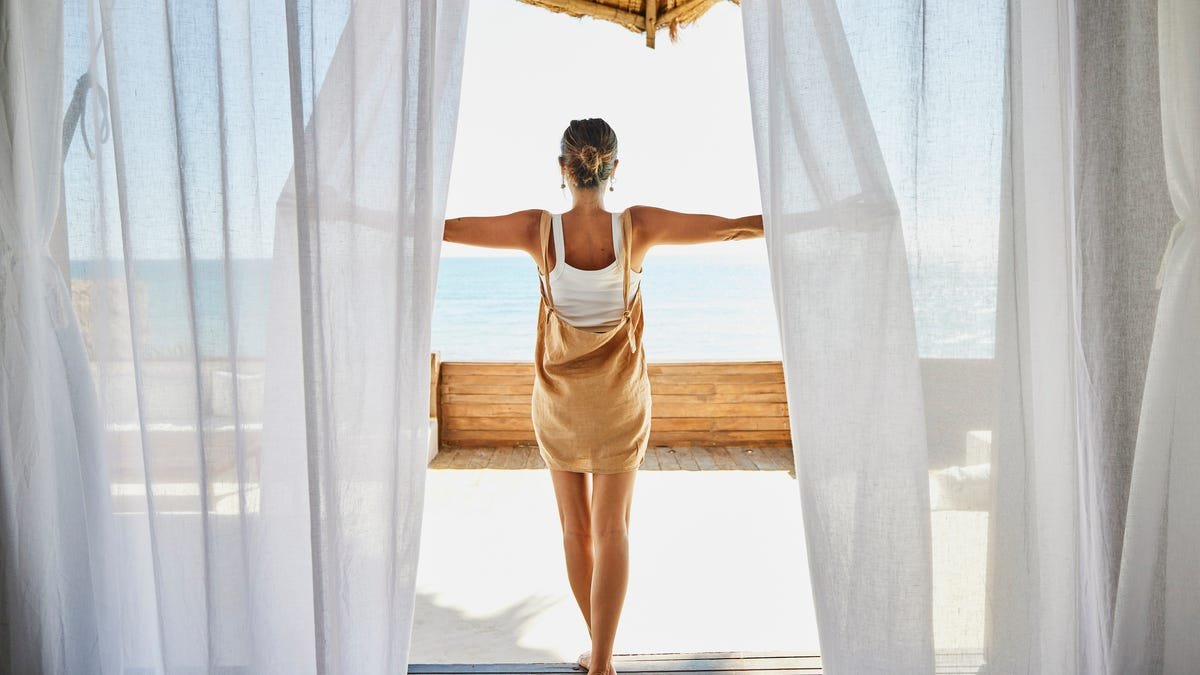
I Travel and Test Home Security: Here Are My Top 9 Airbnb Safety Tips
From Memorial Day trips to summer travels, holiday fares like Airbus have become a popular way to visit a new place, while still having many benefits of home (often with savings options compared to a hotel room). But entering a house also offers safety risks.
When you’re on vacation, I leave you behind the troubles, so I have collected the best CNET points for safety and tech security that work when you go to new holiday rent. There are red flags to see here and what to keep in mind in nine important steps.
Read more: 7 points to find hidden camera in your air bank
1. Initially, do extra research on your host
Check any depth reviews and host notes on any rent.
Air BNB’s basics also include seeing your host’s rank, but don’t stop there. You can uncover a lot of useful information – and potential Airbon B security Red Flags by finalizing the projects and digging a little deeper with the formation of your journey.
Make time to read past studies and see what they talk about. Be careful if the reviews are about the surrounding destination but do not talk about fares yourself, which means that there were issues they do not want to mention. Always select hosts who prefer your identity and “Super Hostens” with many positive reviews.
You can also learn a lot from host pictures – or not included. Find pictures that showcase access locations around the house, how easy it would be to break the windows or doors, and how clean and open the nearby landscape. Thieves also look for it. Be careful if images do not show too much visual information about rent, or if they do not show the safety features that are mentioned.
This is also the best time to Google the surrounding area and also see if it poses a significant threat to the jungle fire or flood from the residential theft.
2. Any protective camera and where they are
Wireless stickup Kim Pro is sitting at the corner of a house, keeping an eye on the outer part of the property.
Airbon B has completely banned indoor security cameras. If you see any, this is a quick deal breaker and you should request a refund as well as find another place. Outdoor security cameras are still allowed, but if you are renting, you should know exactly where they are.
Rental owners often use a combination of security cameras and video dorills, at least, checking when the tenants arrive and make sure they are showing as expected. Find this camera and make sure they do not interfere with the interference or Windows to look into the rent rooms. A single, at least invasive video indoor bull is the best matter.
Main note: Always talk to the hosts when they use about security cameras and any security system. Explain to the host where their cameras are and how they are used. This is a good mini security briefing itself.
3. Check the electronics and decide what you will do (and will not)
The hosts can provide a lot of electronics, but be careful that what you use.
Many fares have been developed with their own electronics, which can include computers, tablets, TVs, sound systems, Wi -Fi routers, smart thermostas and many other gadgets. When you arrive, survey these electronics, especially if the host mentioned them in the list.
As soon as you use this electronics and how you use it. Remember, the hosts can often monitor the use of the device and even be able to view through webcam. Many tenants do not feel comfortable using computers and live on their own devices for safety.
Devices like TV are probably safe, though you should refrain from plugging a rental set box or TV sticks in your screens. But the chargers provided by rent like other gadgets? It is better to clean and plug your chargers in wall shops to avoid malware and other problems.
4. Arrange your unique smart lock codes as soon as possible
Smart locks can provide codes, pass, biometric login and more, but things must be kept organized.
Smart locks are one of the most common devices to rent, and come with many benefits for both you and the host. But it comes with a warning: you need pass codes or digital keys to be used properly.
Before you arrive, ask the host for your digital codes. Apply the details of how the codes work – are they just working for a particular period? What do you think about some times of the day? Most importantly, have the codes been changed since the last tenant? You would like to guarantee your safety and freedom whenever you give up rent.
The hosts who are about to provide a smart lock details, do not provide the proper code or digital pass, or want to restrict their movements to some times of the day, are running on the red flags. In these cases, you should find another place to live if you can.
5. Check the facilities before opening the pack
When you first arrive and rent, this is a great opportunity to find any clear safety or convenience issues in your place. People have faced everything from shower curtains and broken doors to toilets that do not work. Some are found to have a dangerous absence of warm water or a very unexpected roach disease. With major problems like these, it is important that you say “no” that you should manage another instead of starting packing before you realize.
6. Once you enter, scan for hidden cameras
Apps can help you look closely at your Airbon B, but we recommend using them in other ways.
We wish the hidden Airbon B camera is a urban fiction, but it’s a very real trend Happening all over the world. Once you are ready to open the pack inside and the pack, you can check some briefly for invisible cameras.
We have a complete guide about detecting hidden rental campers here. Most can be found only by using flashlights on your phone and scanning rooms in the dark, which reflects the reflection of the lenses and other telt. Apps (Like this from Cooprotino Labs) And if you are particularly worried, gadgets can help.
7. Find basic things like smoking, fire extinguisa and window locks
Always check the included device list against what you actually get in Air BNB.
With calculations of electronics and hidden criminals, in such new places you need to make it through another gadget run. Check smoke/carbon monoxide detector in each room, and make sure the fire extinguisher is easily accessed. Find the windows and locks on the gates on any side.
It is also a great time to find any households in which the host has added to store your valuables. If you want to keep electronics, cash, etc. This is your choice, but properly managed with changing codes, is usually one of the safest places in fare. However, you have to trust your host a lot.
8. See whether WiFi is safe or not
The net gear hotspot device can be much more secure option than to rely on each host’s Wi -Fi.
Wi -Fi is a common, even Air BNBS, but it comes with its own set of risks. It is important that any Wi -Fi offered on a separate guest network, use WPA2 or 3 encryption and its password is good. For example, the host will also change this password even after each guest. Even then, the host still has a lot of control of which devices are attached and what they do.
If you can’t confirm that the Wi -Fi network has the right reservations, do not use it. Some people prefer to use their Wi -Fi hotspots or VPNs instead, instead of risking a stranger’s risks with relying on Wi -Fi.
9. Check local maps or download yourself
Downloading custom maps for your plans with refreshments like iOS 18 is much easier than ever.
Some rent owners offer help to newcomers, such as providing local maps or leaders so that you can easily find your way and get some recommendations. If the maps are not provided, it is now a great time to find some local maps (street, trail, landmark) and download them on their phone or other device. You need a download map that will not rely on Wi -Fi for the area’s safe navigation.
Now you are ready to settle, get out and enjoy your stay. But do not stop reading yet-we have a leader about stopping porch pirates, preventing them, whether you are at home or not, and a complete leader for home security questions and answers.








Add comment
You must be logged in to post a comment.